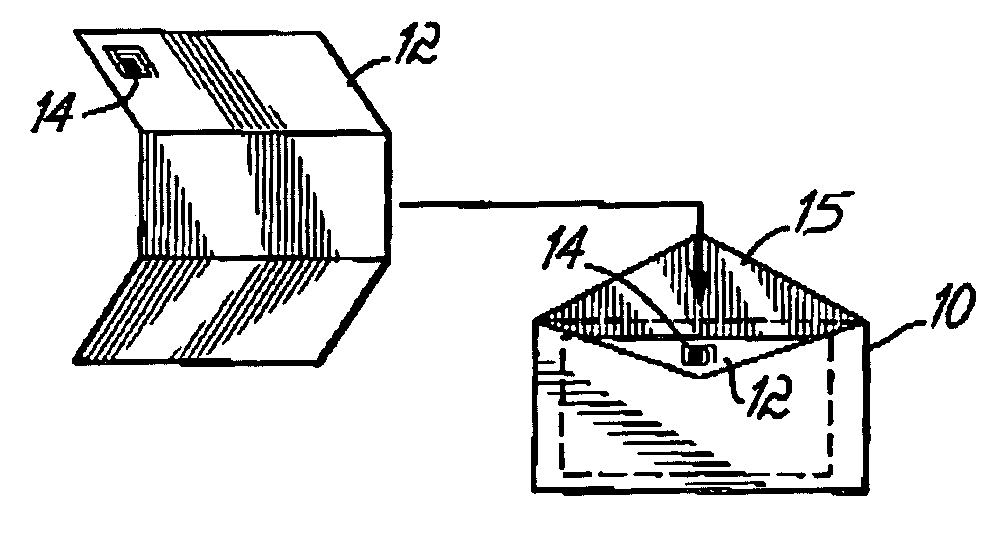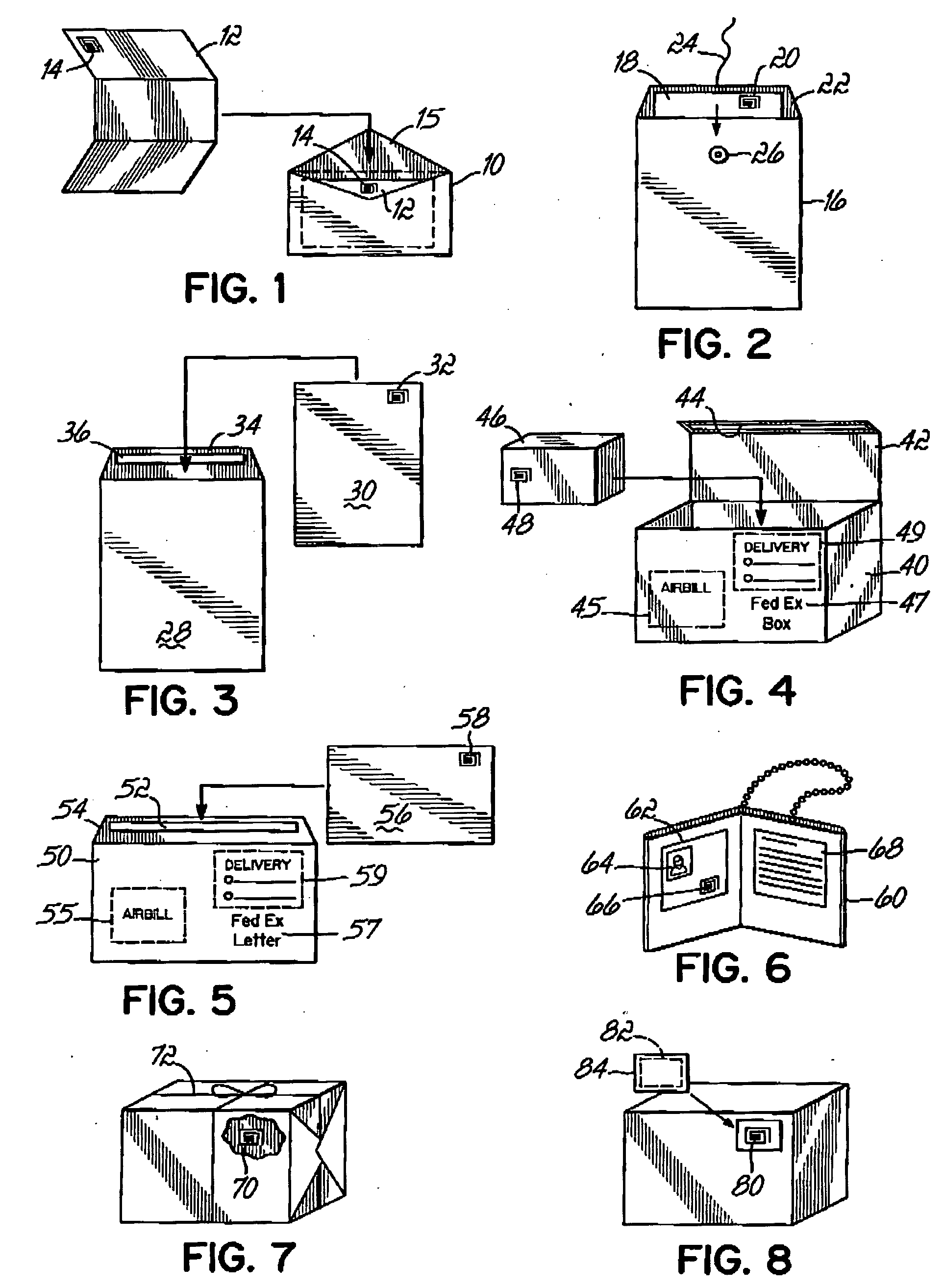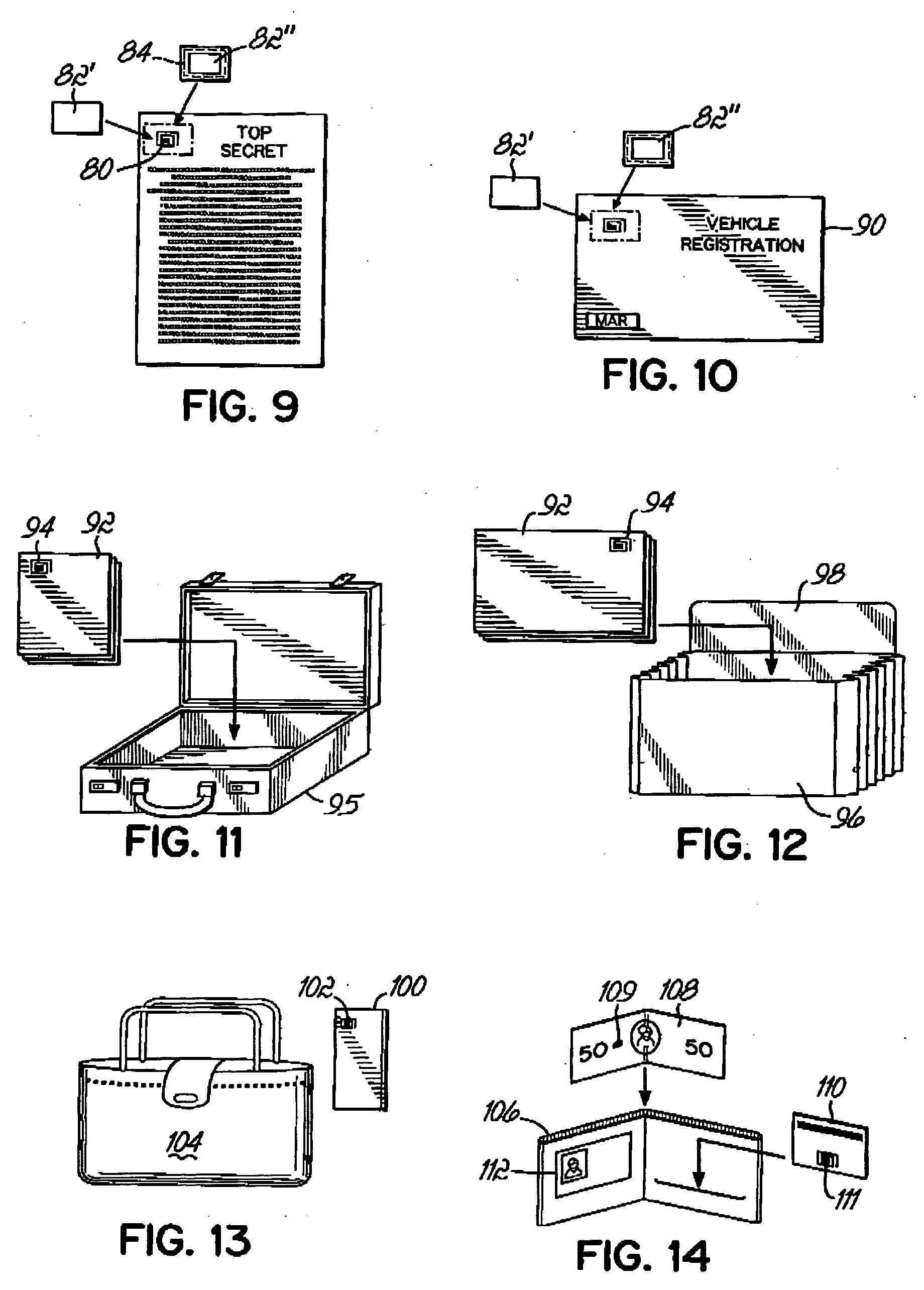Radiofrequency identification shielding
a radiofrequency identification and shielding technology, applied in the field of radiofrequency identification shielding, can solve the problems of unscrupulous rf-id interrogation creating a privacy risk, another risk of rf-id privacy invasion in the mail, and another risk of intrusion, so as to reduce the likelihood and reduce the privacy risks inheren
- Summary
- Abstract
- Description
- Claims
- Application Information
AI Technical Summary
Benefits of technology
Problems solved by technology
Method used
Image
Examples
first embodiment
[0045] Turning to FIG. 1, the invention is illustrated in which a standard business sized envelope 10 is formed of a conductive paper, conductive plastic material, a combination thereof or other conductive material. Envelope 10 is sized to receive a tri-folded standard business letter of size 8.5×11 inches, A4 or other standard sizes. The document 12 contains an RF ID tag 14 the contents of which are to be maintained secure by placement into envelope 10. For similarity to known products, envelope 10 may be made of pliable conductive material. When document 12 is inserted into envelope 10 and flap 15 is closed, envelope 10 forms a Faraday cage enclosing document 12 and shielding RF ID interrogation thereof.
second embodiment
[0046] Referring now to the FIG. 2, in accordance with the invention an interoffice clasp style envelope is utilized as a Faraday cage shield. Envelope 16 is again formed of a conductive material, and is sized to receive a standard business sized document 18 bearing an RF ID tag 20. Flap 22 connected to envelope 16 is closed over the opening of envelope 16 to form a Faraday cage, effective in shielding RF ID interrogation of tag 20. The closure of envelope 16 may take any variety of forms, such as clasps or clips or, as illustrated, a string 24 to be wrapped about a closure bobbin 26.
[0047] Referring FIG. 3, yet another embodiment of the invention is an envelope 28 formed of conductive pliable material, sized for receipt of a standard business document 30 bearing an RF ID tag 32. In this instance, envelope 28 has a flap 34 which bears an adhesive 36. Adhesive 36 may be a conductive adhesive so that an effective conductive connection is made between flap 34 and the body of envelope 2...
PUM
 Login to View More
Login to View More Abstract
Description
Claims
Application Information
 Login to View More
Login to View More - R&D
- Intellectual Property
- Life Sciences
- Materials
- Tech Scout
- Unparalleled Data Quality
- Higher Quality Content
- 60% Fewer Hallucinations
Browse by: Latest US Patents, China's latest patents, Technical Efficacy Thesaurus, Application Domain, Technology Topic, Popular Technical Reports.
© 2025 PatSnap. All rights reserved.Legal|Privacy policy|Modern Slavery Act Transparency Statement|Sitemap|About US| Contact US: help@patsnap.com



